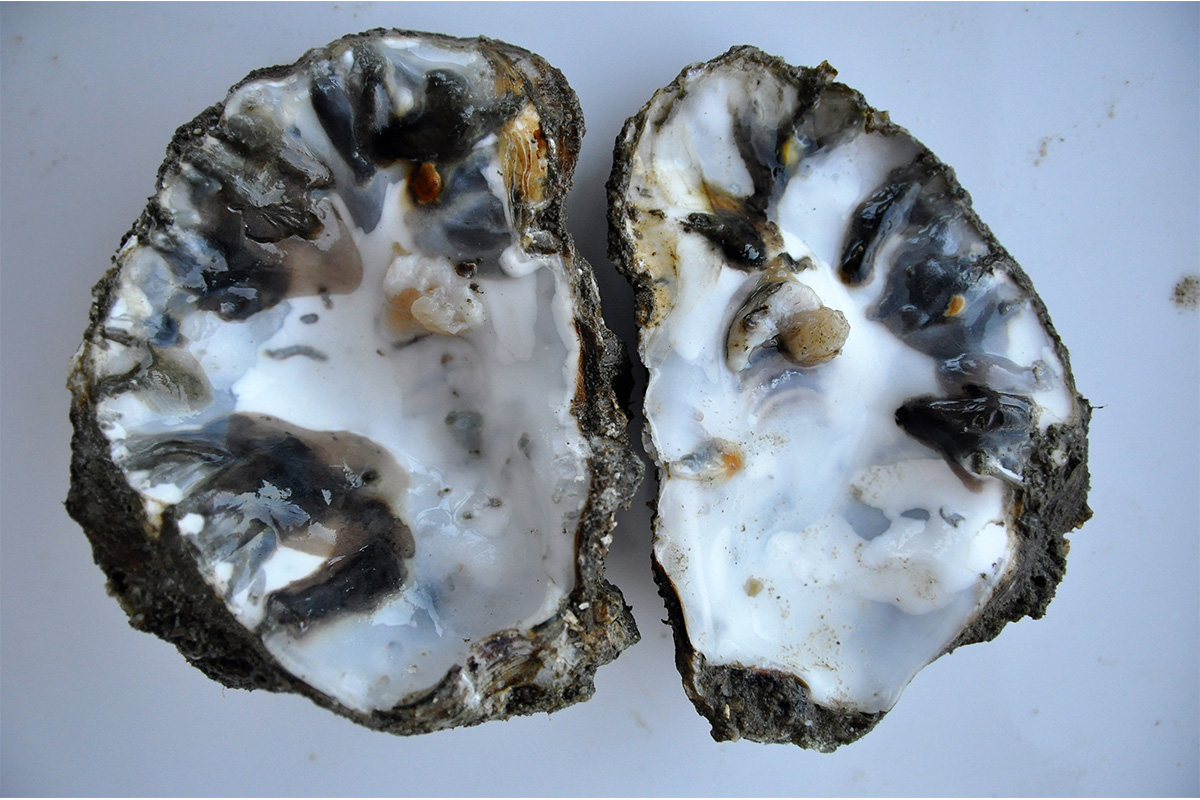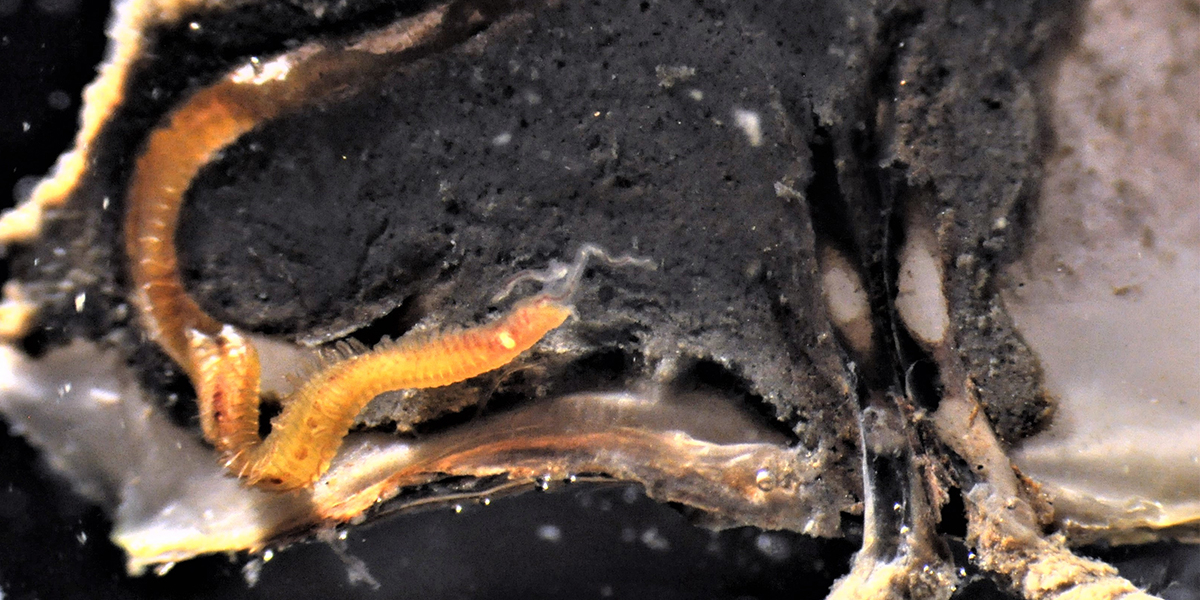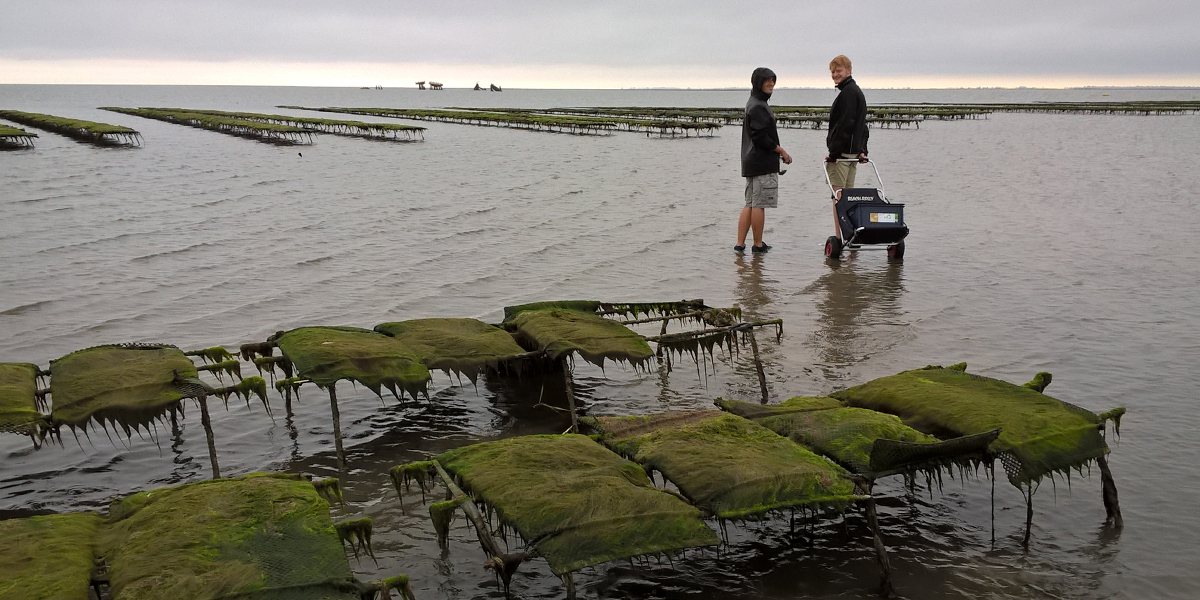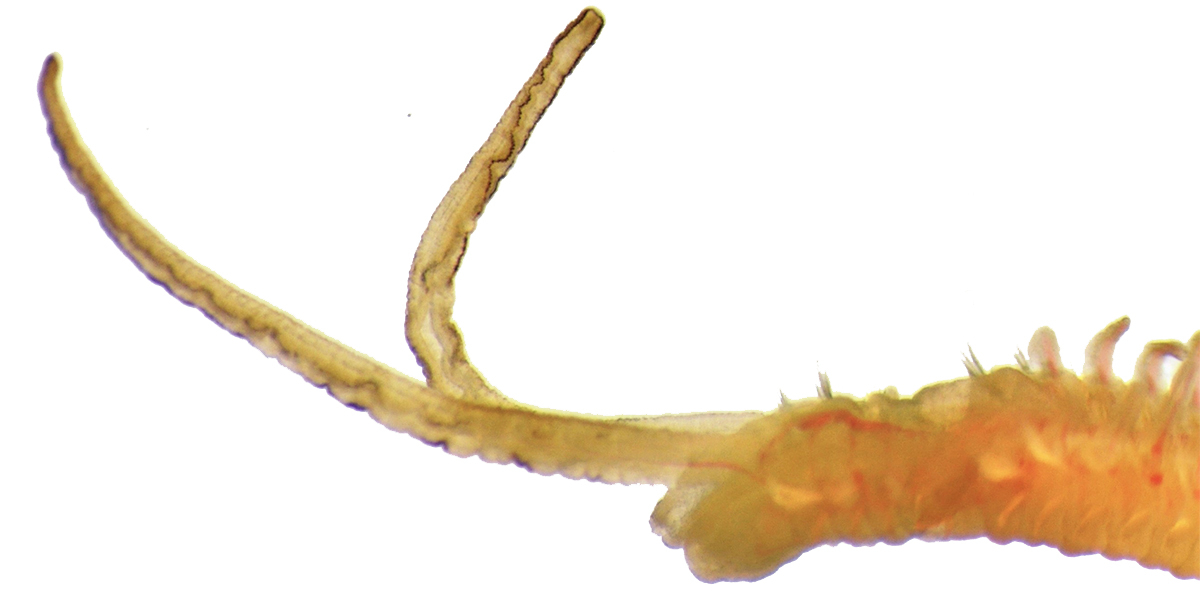First record of invasive shell-boring worm in the Wadden Sea means trouble for oyster
‘Trouble maker’ leaves oyster unsellable
The worm Polydora websteri is a known ‘trouble maker’ that causes mud blisters as it bores its way through an oyster’s shell, rendering the oyster vulnerable to predators in the wild, and unsellable on the market. NIOZ co-author David Thieltges: ‘The worm manoeuvres between the inner and outer world of the oyster. It isn’t strictly speaking a parasite as it leaves the oyster’s body in peace, but by attacking its shell, it drains the energy of the oyster that now needs to focus on its repair.’ Wild populations of Pacific oysters, exotic species that were themselves introduced to the Wadden Sea ecosystem in the 1970s and ’80s, have till now been rather safe from predators. The worm might change this. The oysters might be weakened and their shell softened, making them easier prey for crabs and birds. On the long-term, this could mean a shift in the ecosystem.

While the worm might form a big threat to aquaculture farming, it is also likely that aquaculture itself acted as the primary vector of introduction. NIOZ researcher and co-author David Thieltges: ‘A large part of the invasive species in our marine ecosystem arrives with the import of commercial species and the transfer of farmed specimens between aquaculture sites.’ The worm’s favourite host, the Pacific oyster, is traded and cultured globally. By moving the oyster, the worm, though not -intended, becomes an international traveller as well. The researchers, including Thieltges and AWI-scientist Andreas Waser, found the first Polydora websteri in the direct vicinity of an oyster farm that imports juvenile oysters from a nursery in southern Ireland. Their travel path illustrates the global character of the trade. Thieltges and Waser: ‘This site of the first record was also the site with the highest infestation. We suspect that the arrival of the worm in the northern Wadden Sea may be related to the oyster imports.’

Here to stay and to be reckoned with
Once introduced, the further spread of invasive species can continue either via dispersal of larval stages or human-aided secondary vectors such as fouling on ship hulls. This may explain that the worm was also found during sampling at the Mokbaai on Texel, an island without oyster farms. Thieltges underlines, that it is unlikely that the worms found near Texel came from Sylt. ‘That they made their way from Sylt to Texel, along almost 500 kilometres of coastline, seems rather unlikely. We think there might be a different origin.’
An option would be that larval stages of the worms found in the Dutch Wadden Sea came from Zeeland where there is commercial oyster aquaculture. However, the team still needs to investigate whether the worm is already present in Zeeland as well.’ Thieltges: ‘Sampling at other places in the Netherlands and in Europe together with genetic research is now needed to establish the origin and distribution of the worm. We don’t know its exact origins yet, but we know that it’s here and that it is very likely to keep extending its range.’
Publication
Andreas M. Waser, Dagmar Lackschewitz, Jeffrey Knol, Karsten Reise, K. Mathias Wegner, David W. Thieltges
Spread of the invasive shell-boring annelid Polydora websteri (Polychaeta, Spionidae) into naturalised oyster reefs in the European Wadden Sea.
Marine Biodiversity (2020), DOI: 10.1007/s12526-020-01092-6

